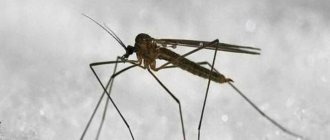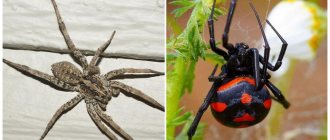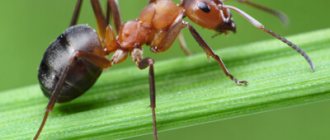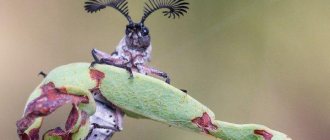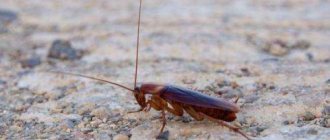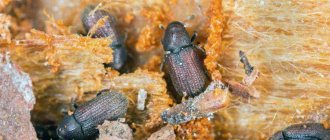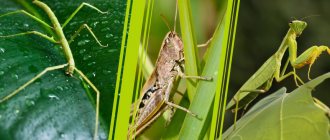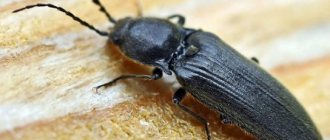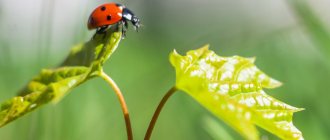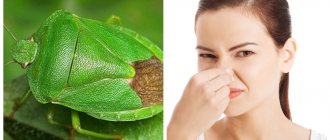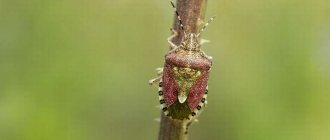Weevil
Weevils (or elephant weevils) are one of the most widespread families of beetles on the planet, with more than 50 thousand species. About five thousand of them are found in Russia. They got their name due to their characteristic appearance: the front part of the head of weevils is elongated, it is called the rostrum.
Gardeners and gardeners are well acquainted with these beetles - this pest is capable of not only spoiling the crop, but also completely destroying it. By the name of the species, you can understand what crop the beetle “specializes” in (for example, the beet weevil, a beet pest). The number of beet weevils is influenced by larger animals and birds. Shrews, hedgehogs, starlings, jackdaws and magpies, hoodies, jays, gulls, larks, quails and others feed on them.
Acorn weevils (oak fruit weevils) use oak fruits to breed offspring. The female makes a deep hole in the immature acorns and lays one or two eggs there. After about two weeks, yellowish-white larvae with a red-brown head appear.
Karakurt - the most dangerous spider in the Moscow region
Karakurt is one of the most poisonous and most famous spiders on the planet. Until recently, people only watched about them on TV, but now residents of Moscow and the Moscow region have every chance to meet them in person. Yes, despite the fact that the number of spiders in the world is decreasing, in the vicinity of the capital there are, on the contrary, more of them. True, scientists reassure and say that the karakurts, also known as “black widows,” are not permanent residents of this region.
Despite the fact that encounters with them are no longer rare, all spiders, according to them, are imported. They can get here, for example, with fruit. In the local climate, they can reproduce, feel quite comfortable and even survive the warm winter. But severe winter frosts, which are still not uncommon in the Moscow region, will not allow them to stay for long. In particular, Elena Volosyuk, leading specialist at the FOBOS Weather Center, speaks about this.
However, such explanations still provide little reassurance. These spiders are indeed not uncommon in recent years and there have already been cases of bites. Moreover, the first was recorded in 2022 - a spider bit a pensioner right in an apartment in the west of Moscow.
Karakurt is the most poisonous spider of the fauna of Russia
Karakurt probably doesn’t need any introduction. This is a relatively small spider, blue-black in color, with a massive abdomen. As a rule, it has red spots, sometimes with white borders or pure white. There are also individuals that are completely black. As a rule, they weave their nets low from the ground. They are most active in June-July, when their mating migration season begins.
The bite of this spider is extremely toxic and can be fatal. It begins to act instantly. A burning pain appears, which after a short time becomes unbearable and covers the entire body. Most people who have been bitten complain of pain in the chest, abdomen and lower back. In this case, a sharp spasm of the abdominal muscles occurs. A lot of other unpleasant symptoms also occur, such as shortness of breath, dizziness, headache, vomiting, clouding of consciousness, delirium, etc.
If you are bitten by a karakurt, you must immediately seek medical help, as minutes can really count. Before the ambulance arrives, you can take some measures yourself. For example, cauterizing the skin puncture site with several lit match heads helps. However, the procedure must be performed no later than two minutes from the moment of the bite. Intravenous administration of novocaine also helps, but it must be done by doctors.
The bite of a wasp spider is not fatal, but causes severe burning pain at the site of the bite.
Bordered bug, or sorrel bug
There are 40 thousand species of bedbugs in the world, and they are often found in the capital's forest parks. By its unusual coloration, observers can recognize the bordered bug, or, in other words, the sorrel bug.
The beetle itself is brown, and the upper part of the abdomen is bright, reddish-brown, this is especially noticeable when the bug is flying. Interestingly, its second and third antennas have a reddish tint, and the fourth is black. Kraevik lives in thickets of sorrel, rhubarb and other wild and cultivated plants of the buckwheat family.
DOMOSTROYPlumbing and construction
Blog about insects and arachnids inhabiting home insectariums.
The large oak longhorned beetle (Cerambyx cerdo), a fairly common beetle, is found both in Russia and abroad and is of impressive size. It lays larvae in oak wood, which is how it got its name. Read the photo and description of the large oak longhorned beetle in this article.
Information
- Ilya Kerov
- 01/23/15 at 16:13
The South Russian tarantula is quite beautiful and very interesting in its behavior. In this article I will describe this tarantula in detail, talk about its natural habitat and much more. I will give practical advice on keeping the South Russian tarantula at home, and of course there will be many photographs of the South Russian tarantula.
Information
- Ilya Kerov
- 24.11.14 at 18:02
An article about a close relative of the centipede - the drupe, which is widespread in central Russia and is often found in forests, gardens and even in cities. These are amazing centipedes that have learned to live in our harsh conditions. Interesting article, many author's photos. Description of the common drupe (Lithobius forficatus).
Hello again! In this part of my summer photographic observations of the life of insects we will talk about the order BEETLES. And as in previous parts with small facts and interesting notes about them. Order BEETLES (Coleoptera) The name of the order - Coleoptera - reflects one of the most significant characteristics of the insects included here. Their fore wings, or elytra, are very hard and durable; they cover the soft upper side of the abdomen and the membranous wings of the second pair located here. It is these membranous wings that are used for flight. They are much longer than the elytra and in a calm state are folded and hidden under them. One of the brightest representatives of the order is the ladybug.
Why does this bug have such a name? This is what Internet users think: “They call her a cow because of her biological characteristics. In case of danger, from the pores on the bends of the limbs of this bug, a MILK of unusually red color is released, which is deadly for predators. As for the name “God’s”, it has long been believed that a cow lives in the sky, only occasionally descending to earth, performing the function of God’s messenger: with her help you can find out what the harvest will be like, what the weather is expected to be like. And, probably, they call her “God’s” by analogy with the expression “God’s man” - in the sense of quiet, meek, harmless. after all, this is exactly the impression she gives, although she is in fact a predator that eats harmful insects.” I liked this assumption; unfortunately, I did not find a scientific explanation.
Black-spotted ragium and bighead
The black-spotted ragii is a species of the longhorned subfamily of the longhorned family. Adult representatives of the species eat plant and animal foods. Females lay eggs in the bark of stumps and fallen trees. Larvae that hatch from eggs also grow under the bark. There they make winding passages, filling them with drill flour - small sawdust and wood dust.
Another inhabitant of the capital's forests can be mistaken for a wasp at the first meeting. But bigheads are flies; they don’t have stingers. Flying insects get their name from their large and swollen heads. The antennae of flies are usually long, and the eyes are set far apart. Adult flies of this species pollinate many cultivated plants.
Five of the most unusual insects in the Moscow region
But stop, I assure you, they didn’t see it. Because in order to see, you need to look... And sometimes you see such a miracle that... it doesn’t seem like much.
1. The amazing stick insect first caught my eye when we were...fishing together. It was at the Nara fish ponds, I sat quietly on the bridge on a small paid pond, there was no bite, but only boredom. And suddenly something slid from a tree branch onto the walkway. At first I thought - it seemed. And then... This amazing creature is a small broken twig-stick, only alive. By the way, this is a squad of ghosts!
If you look, you won’t notice... These insects like to pretend (be like) various parts of the plant and not everyone can see them just like that. But if you see it, take a look. Everything about them is funny - from their fragile body to their pronounced eyes. By the way, some exotic lovers like to keep stick insects in captivity. Well, I don’t know how humane this is - let them walk, eat plants, enjoy life.
2. Previously, it seems to me, there were fewer hawk moths, and they were found mainly in the south. Now bedstraw (as well as other species) hawk moths may well be “dancing” over your plot of land near Moscow. To drink nectar, hawk moths roll out their curled proboscis forward and flap their wings so often that a kind of “force field” is formed around the butterfly. Sometimes from the outside the butterfly looks like a hummingbird.
3. Giant slugs are a mind-blowing sight. They are impressive and resemble manatees. Like other slugs, giants love to crawl out for walks at night and love moisture and warmth. Medium-sized slugs are not of particular interest. But big guys can make you watch yourself for hours.
4. Many people don’t like caterpillars, and I’m not a fan of this tribe. But in fairness, I noticed that this was an amazing sight, a caterpillar brightly colored by nature itself.
One of the most beautiful butterflies in the Moscow region - the swallowtail - has amazingly beautiful caterpillars. You can't always spot them in the foliage, but be a little more attentive, and someday you'll definitely see them.
5. Extremely rare, but you can also find real fireflies in the Moscow region. These inconspicuous insects seem to hold a flashlight under their abdomen and shine so brightly that their green lights can be seen tens of meters away. There are quite a lot of fireflies in the middle Volga region. But last year I saw this in my own garden - I was both surprised and delighted.
Argiope spider - the bite is painful, but not fatal
Argiope is also called the wasp spider or tiger spider as a result of its distinctive coloration with alternating black, white and yellow stripes. As a rule, it has an elongated abdomen, so it really resembles a wasp hanging on a web. The spider usually weaves it in the grass, where it waits for prey.
We hasten to reassure you that the bite of this arthropod, unlike the bite of the karakurt, is not fatal. However, it is still better to avoid a close encounter with him, since the effect of the poison causes severe pain, comparable to a wasp sting (yes, the case when appearance did not disappoint). In addition, an allergic reaction and individual intolerance are possible.
To learn even more amazing facts about the flora and fauna of the Earth, subscribe to our Telegram channel.
Like the “black widow,” the wasp spider appeared in the vicinity of Moscow quite recently. Previously, it lived only in more southern regions.
The bite of the cross spider is accompanied by a number of unpleasant symptoms
